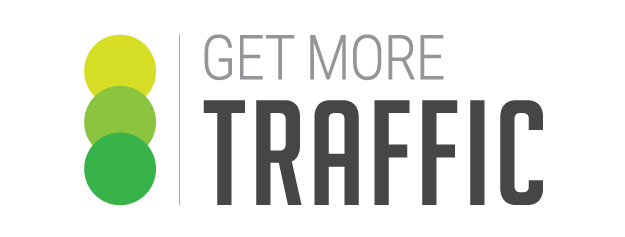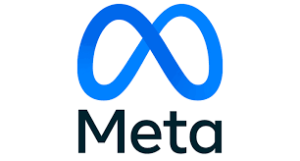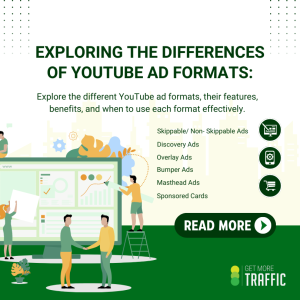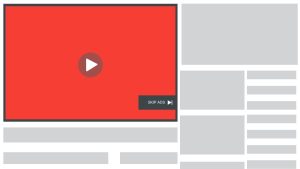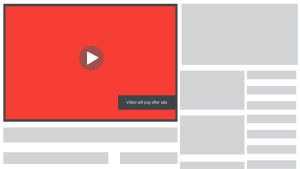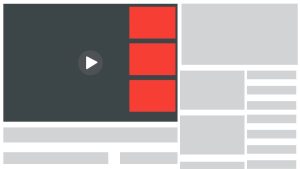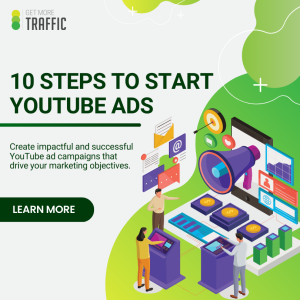What is Meta?
Meta, is a company that has redefined the way we connect, communicate, and consume content. Meta, previously known as Facebook, has expanded its horizons beyond the conventional realms of social networking and now offers a multitude of services under its umbrella. One of the standout components of this transformation is Meta Ads – a dynamic advertising platform that enables businesses to engage with their target audience like never before. Its flagship product, the Facebook social media platform, has grown to encompass a broader vision, leading to the rebranding of the company as Meta. Meta envisions a metaverse that goes beyond traditional digital experiences, integrating augmented reality, virtual reality, and various other technological advancements.
What are Meta Ads?
Definition
Meta Ads, an integral part of Meta’s ecosystem, are a sophisticated form of digital marketing that empowers businesses to connect with their target audience across multiple platforms, including Facebook, Instagram, Messenger, and more. These ads leverage the vast amount of data within the Meta network to deliver personalized and relevant content to users, thereby enhancing the effectiveness of marketing campaigns.
Purpose
Meta Ads serve a multifaceted purpose in the digital marketing landscape. They enable businesses to reach a wider audience by connecting people from all over the world as their potential target audience. It provides a diverse range of advertising formats like video or image which caters to various business goals and creative strategies which maximises engagement. It also helps with analysing results as it provides tools and techniques to track the performance of the campaigns in real-time, enabling data-driven optimizations.
Types of Meta Ads
Facebook Ads

They let businesses use single images to promote their products, services, or brand. Image ads can be used across different ad types, placements, and aspect ratios. Image ads are a good fit for campaigns with strong visual content that can be shown in just one image. These images could be made from illustrations, design, or photography.
Facebook lets businesses use a single video to showcase their products, services, or brand.They’re especially helpful for product demos, tutorials, and showcasing moving elements.
Carousel ads showcase up to ten images or videos that users can click through. Each has its own headline, description, or link. Carousels are a great choice for displaying a series of different products. Each image in the carousel can even have its own landing page that’s specifically built for that product or service.
Instant Experience ads, previously known as Canvas Ads, are mobile-only interactive ads that let users engage with your promoted content on Facebook. Using Instant Experience ads, users can tap through a carousel display of images, shift the screen in different directions, as well as zoom in or out of content.
Collection ads are kind of like immersive carousels — taking the user experience a step up. Collection ads are mobile window-shopping experiences where users can flick through your product lineup.
Instagram Ads
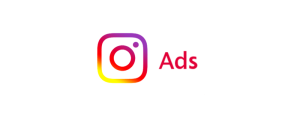
These are single-image ads that appear in users’ Instagram feeds. They are a simple yet effective way to showcase products or services and can be used to drive traffic to a website or landing page.
Video ads are similar to photo ads, but they use videos instead of images to convey the message. Instagram videos can be up to 60 minutes long, but you should prefer much shorter videos for your ad. Video ads are a great way to tell a brand story or showcase a product in action.
-
Carousel ads
Carousel ads allow businesses to showcase multiple images or videos within a single ad unit. Users can swipe through the images or videos, giving them a more immersive experience.
-
Story ads
Instagram Stories ads are full-screen ads that appear in between users’ stories. These ads are a great way to create interactive and immersive experiences for users and this is why engagement is often higher with this type of ad.
-
Collection ads
Collection ads are designed for e-commerce businesses and allow users to shop directly from within the ad. These ads feature a cover image or video and multiple product images below, making it easy for users to browse and purchase products.
-
Explore ads
Explore ads appear in the Explore section of the Instagram app, where users discover new content. These ads are a great way to reach a new audience and increase brand awareness. Instagram Explore ads do not appear directly in the Explore section, but are shown after someone clicks on a photo or video from Explore.
-
Shopping ads
Designed for e-commerce businesses that have a shop on Instagram, Shopping ads take users directly to a product description page within the app. From there, your customers can easily make a purchase.
-
Reels ads
After the launch of Reels, Instagram has also allowed Reels Ads. These ads are usually videos, up to 60 seconds long, that are shown between Reels.
Process
Step 1. Choose your objective
Login into Facebook Ads Manager and select the Campaign tab, then click Create to get started with a new Facebook ad campaign. There are 3 marketing categories – Awareness, Consideration and Conversion that Facebook provides with consumers on what they want their ad to accomplish.
Step 2. Name your campaign
Name your Facebook ad campaign and declare whether your ad fits into any special categories like credit or politics. If you want to set up an A/B split test, click Get Started in the A/B Test section to set this ad as your control. You can choose different versions to run against this ad after it’s published. Scroll down a little further to choose whether to turn on Advantage Campaign Budget+. This option can be useful if you’re using multiple ad sets, but for now, you can leave it turned off. Click Next.
Step 3. Set your budget and schedule
At the top of this screen, you will name your ad set and choose which Page to promote. Next, you decide how much money you want to spend on your Facebook ad campaign. You can choose a daily or lifetime budget. Then, set the start and end dates if you want to schedule your ad in the future or choose to make it live right away.
Step 4. Target your audience
Scroll down to start building the target audience for your ads. Start by selecting your target location, age, gender and language. Under location, you can even choose to include or exclude cities over a certain size. You can also prioritize people who’ve recently shown an interest in the product or service you sell.
Step 5. Choose your Facebook Placements
Scroll down to choose where your ads will appear. If you’re new to Facebook advertising, the simplest choice is to use Advantage+ Placements. When you select this option, Facebook will automatically place your ads across Facebook, Instagram, Messenger, and the Audience Network when they are likely to get the best results
Step 6. Set brand safety and cost controls
Scroll down to the Brand Safety section to exclude any types of content that would be inappropriate to appear with your ad.
Step 7. Create your ad
First, choose your ad format, then enter the text and media components for your ad. The formats available will vary based on the campaign objective you selected back at the beginning of this process. Use the preview tool at the right of the page to make sure your ad looks good for all potential placements. When you’re happy with your choices, click the green Publish button to launch your ad.
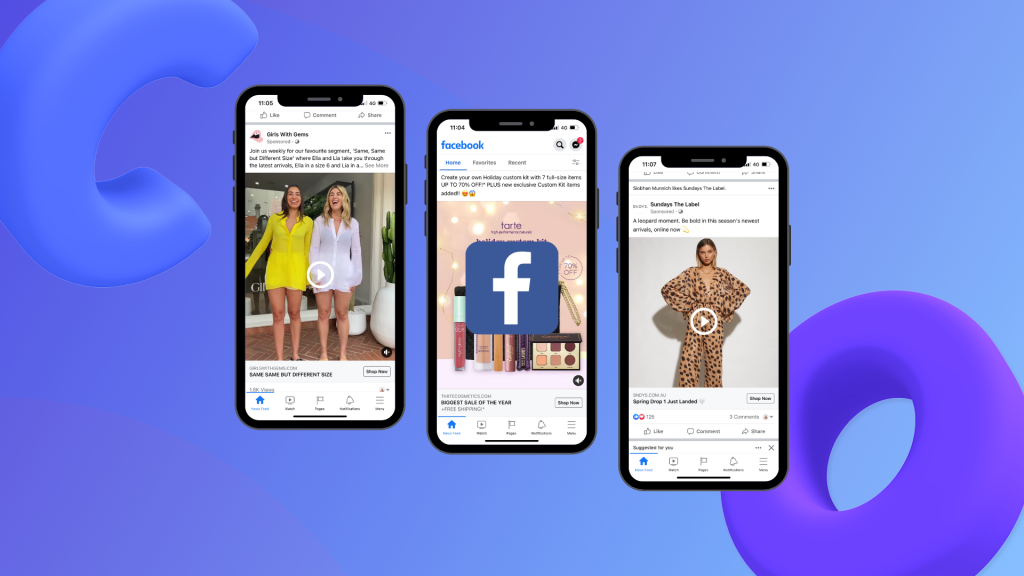
Tips and Tricks
- Use vertical videos: Use a vertical or square aspect ratio. Most people hold their phones vertically, so you’ll cover more of their screen.
- Shorten text: People on Facebook and Instagram scan quickly. In research conducted by the Mobile Marketing Association, it took two to three seconds for two out of three for people to see and cognitively recognise desktop ads compared to 0.4 seconds on mobile. Keep your text short, clear and concise to get your message across.
- Add multiple images using the carousel format: Carousel allows you to show several images for people to scroll through at the same cost. It’s a great opportunity if you have lots of product or brand images.
- Add movement: Ads with movement can stand out in Feed. Templates in Meta Ads Manager can help you create a video ad from your images.
- Use calls to action: A range of call-to-action (CTA) buttons are available for Facebook and Instagram ads. These buttons draw attention and encourage people to engage with your ad. Based on what you want people to do when they see your ad, experiment with the CTA buttons available for different ad objectives and formats. See which ones get your audience to take action.
Resources
Paid Meta Training Resources
Free Meta Training Resources
May Digital Marketing Industry Updates
Keep up to date with latest digital marketing updates in the industry by following the Get More Traffic blog.
New Immersive Google Map Features Announced!

Businesses within the tourism and restaurant industries have more reason to increase their online presence. A new immersive visualization that combines Street View and aerial imagery to create a more dynamic and complete digital model was announced by Google at the recent 2022 I/O Summit. This new feature creates a holistic view and vantage of notable landmarks, restaurants, and other popular venues, giving potential customers a good idea of the venue before ever setting foot inside. For marketers, this would be a good way to market the look and feel of a place especially if they are looking to close potential bookings and reservations for events and celebrations.
Meta Ad Library Listings Now Providing More Transparency

As part of their continued efforts to limit access to users’ personal data and create more transparency on how advertisers are using that data, Facebook Meta has decided to add more insights on political, electoral, or social issue ads used on their platform. This change should be able to help researchers better analyse trends in ad usage. Furthermore, the new insights and information could also be used to give marketers get a better glimpse of their competition’s strategy and what audiences they’re currently targeting. Scoping out Meta’s Ad Library is always a good way to gather and collect fresh ideas and strategies, and these new changes to advertisers’ transparency will only help businesses be more competitive in terms of their advertising on the platform.
LinkedIn Makes New Content Discovery Updates
Some developments from LinkedIn have come up recently. One of these includes improvements to its content discovery updates. LinkedIn is making it easier now for users to find content surrounding topics they’re searching for. For example, when searching for breaking news, topics, or trends, users will not only be shown content from those within their network but also content from relevant creators as well. At the same time, LinkedIn is also making it easier to find content that you may have already seen previously. By allowing users to search a creator’s name or certain keywords within their content, content is now more discoverable and easier to find than ever before. If you’re looking to leverage off of LinkedIn’s professional network, now might be a good time to create or repurpose content to get more eyes and traffic on your business.
YouTube Shorts Gets a Green Screen!

While the Green Screen feature was first introduced last October, it was less than ideal compared to what TikTok and Instagram had on their platforms. When YouTube’s Green Screen option came out, it only allowed users to upload content from their camera roll to be used as their background image. Recently, YouTube has made updates to this feature, now also allowing the use of any eligible YouTube video or short as the background. To access the Green Screen function, simply select Create > Green Screen among the options under the video you’re watching. Or, if you’re watching YouTube shorts, click on the 3-dot menu and select Green Screen. For influencers, one way that this function has been used historically is as reaction videos, wherein influencers react to the latest memes or videos on their own feeds. YouTube Shorts’ length, though, still remains at 60 seconds, making it good for quick tips, tutorials, and behind-the-scenes looks for businesses.
January Digital Marketing Industry Updates
Facebook Removes 4 Sensitive Targeting Categories
Possible New Feed Options Coming to Instagram!
Search Your Twitter Direct Messages for Specific Topics and Keywords
You Can Now Pin Products at the Top of Your Local and Google Map Listings
September Digital Marketing Industry Updates
Google Display Ads Now With More Automation Features!
Automation is becoming increasingly important these days as algorithms continue to learn and develop over time. As a result, Google is helping advertisers maximise that potential by adding more automated options for Display Ads. Advertisers will be able to choose their preferences in terms of the level of automation applied in the bidding process, the creatives, and the choosing of audiences. Advertisers are still promised the best reach and performance even with regards to the automated options, and these automation preferences can be changed at any time without having to create a new campaign. Over time Google is certain that these automated targeting systems will only keep improving, and will continue to deliver the best results for ad campaigns versus those that are setup manually.
Facebook Also Improves on Automation to Counter iOS Update
Apple’s update that allowed users to choose whether they would allow activity tracking on their devices continues to affect marketers and advertisers. To counter the change, Facebook has also been developing automated features for Facebook Ads. One such feature they’ve developed is the Targeting Expansion. Targeting Expansion makes use of Facebook’s algorithm to show your ads to a broader audience than just the ones that you’ve selected for your campaign. The algorithm will diagnose and determine if your ads would receive a better response with targets beyond your scope, and deliver ads to those users based on its diagnosis. With Facebook’s algorithm being as powerful as it is, it should be worth testing to improve Facebook ad results.
Google Confirms it Auto-Generates Titles for Search Results
Google has made a recent change to its search results pages. Before the update, search results titles were based upon the string of words typed into the search bar by the user. Now, with the change, Google is using a system that generates titles based on the page titles and headlines. Google reassured users and content creators that rankings are not affected by the title changes. It’s important to note, however, that because Google is now pulling titles from your <H1> tags, you must optimise them for when they do appear on the search results.
Instagram Testing Out New “Favourites” Feature
Instagram is testing out a new feature internally called “Favourites” to help improve the overall experience of its users. The feature is very similar to Facebook’s, wherein a user gets to choose 30 friends and pages they would like to hear from first before scrolling through the rest of their feed. This “favourites” feature on Instagram is ideal for businesses, influencers, and content creators that are looking to build a dedicated fanbase on Instagram, as it should place your content above the rest of the feed, giving you incrementally more reach and impressions as you build your audience. The feature is still being tested, and there are no clear indications on whether Instagram will roll it out, but it is definitely something to look forward to if it does.
Google Ads or Facebook Ads: Which Fits Your Business Better?
In digital marketing, every good marketer will tell you that the best strategy is an omnichannel strategy. Don’t put your eggs into one basket. The more channels you can distribute your content through, the better.
However, every so often we still do get this common question from our clients, “Which is better, Google ads or Facebook ads?” And our answer has always been the same: “Both!”
Deciding where to spend the bulk of your budget requires more complex thinking, strategising, and planning. In fact, when choosing between Google or Facebook, the more appropriate questions are actually:
- Which platform better fits my budget?
- Which platform is a better fit for my product?
- What stages of the customer journey am I targeting?
And so, to answer the question between Google Ads and Facebook Ads, we’ll tackle each of these points to help you get a sense of which platform is best to start advertising on.
1. Which Platform Better Fits My Budget?
Because we usually service small-to-medium businesses, the concern about budget comes up in relation to which platform is the better one. Most business owners want to know where is the best place to start advertising into?
To start, get very clear with your numbers. How much can you afford to pay to gain a customer? You want to make sure that you’ll be able to get the best potential returns on your ad spend. To know that, you’ll also need to look at your industry and how they’re performing on both platforms.
Google Keyword Planner can provide you with a good estimate of your potential cost per click (CPC). Some industries are incredibly expensive from a cost per click angle. If you have a daily budget of $500, for example, but your cost per click is around $50, that means that you’re only getting 10 clicks to your website a day. Of course, other industries are less competitive, costing you only $1-$5 per click or less!
You can always bring down a high-cost CPC with a lot of testing and research, and it would be worth it. But you may also want to consider Facebook, which has more robust targeting capabilities.
2. Which Platform is a Better Fit for My Product?
Google is a search platform, servicing users whose intention is to find answers to their questions. The intention could simply be additional information on a topic, or to find a product or service that could provide the solution to their problem.
Facebook is a social platform where users want to find out what’s new and what’s happening within their social circles. It can also be a place to discover trends and the latest news and updates on things you’re interested in. But the primary purpose of Facebook remains to be social.
If your business sits in the entertainment or news industry, for example, Facebook ads could prove to be the better fit for you, as you’re leveraging off of the many communities that talk about and discuss the topics within the industry.
If you’re a service provider, on the other hand, such as law & architecture firms, clinics, maintenance services, or restaurants, Google can bring in customers that are looking specifically for your services. In fact, according to Google, the searches for terms including “Where to buy” and “near me” have grown by over 200% in the past two years.
3. What stages of the customer journey am I targeting?
Now that you’ve considered your budget and fit, it’s time to consider the intent of the audiences you’re targeting.
One advantage Facebook has over Google is the potential to target any interest, ranging from large pools like sports and entertainment to very niche interests like pottery, knitting, or scrapbooking. Facebook can show your ads to as many people as possible that have those targeted interests.
One advantage Google has over Facebook is being able to target audience intent. Because Google Ads are keyword-based, you’re able to target users in different stages of the customer journey: whether they’re just curious, or they’re already looking to purchase.
A user that intentionally typed in “Vegan restaurants near me” is at a very different stage than one that’s just scrolling through their Facebook news feed and just comes across an ad for a vegan restaurant. They may be interested, and curious enough to click, but they might not yet be at that buying stage compared to the user searching on Google.
Therefore, advertising on both platforms at the same time is often recommended. And while both platforms give you the ability to re-target users that have engaged with your ads or your website, bringing in a cold audience can be more challenging if you’re just going with one or the other.
If you’re still confused about all this, or you’re on the fence about whether you want to advertise on Google or on Facebook, contact us and get in touch with one of our experts. We’ll be more than happy to help to clarify things for you even further and help you get started on the right path to online success!
August Digital Marketing Industry Updates
Facebook Ads to Include Privacy Enhanced Technologies for Greater Security
Facebook has been looking into creating more secure safeguards and measures for its users while still be able to give them a personalised experience on the platform. To do that, they’ve developed Privacy Enhanced Technologies (PETs) that draw in techniques from cryptography and statistics that will make use of on-device learning. This simply means that the algorithm will now process user data and information on the user’s device rather than store and analyse it on the cloud or a remote server. Keeping the information locally should help keep data secure, while still give Facebook users personalised ads on the platform.
Targeting users under 18 based on age, gender or interests now disabled for Google Ads
As more and more students and children undergo virtual schooling, Google is taking some necessary steps and measures to ensure that they can still stay secure and protected. One policy that Google is introducing is the ability for anyone under 18, or their parent or guardian, to request the removal of their images from Google Image search results. Additionally, Google is adding more protocols and safeguards to protect teens from age-sensitive ad categories. For advertisers, this also means that targeting based on age, gender or interests for people under 18 is no longer allowed. And while this may not greatly impact marketers and advertisers, expect certain audiences to be removed for ad targeting.
Attribution Models Now Applied to YouTube and Display Ads
The benefit of attribution models for Google Ads is that they can help marketers gain a better understanding of the engagement and conversions they receive from their campaigns. Recently, Google upgraded all their Google Ads attribution models so that they are now able to support Display and YouTube ads as well. Together with the upgrade comes the ability to view data for Search, YouTube and Display campaigns all in one place, making it easier to make comparisons between platforms. Additionally, YouTube’s data-driven attribution model is now also able to measure “engaged views”, giving advertisers more insights to their ads and engagement. Finally, the upgrade is a step that further helps marketers further understand a customer’s online journey towards a conversion, so that they can make more informed decisions when optimising their campaigns.
Instagram Test Ad Placements in Shop Tab
In an attempt to give online retailers and shops more support in e-commerce, Instagram is testing out ad placements in their Shop tab to try and distance themselves from relying too heavily on third-party cookies and cross-app tracking. Additionally, having all activity and engagement happen on the Instagram app gives advertisers more insight and control over their campaigns. The ad placements are currently only available to a certain retailers in the U.S. However, after testing, Instagram is planning on rolling out these placements globally in the coming months.
